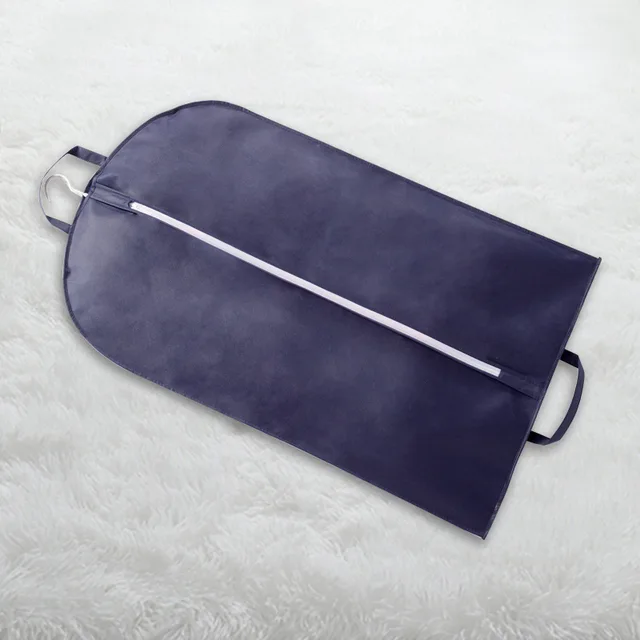
Introduction
Garment bags are essential accessories for anyone looking to protect and transport their clothing with care. These bags are designed to keep your clothes wrinkle-free, clean, and organized, making them perfect for travel, business trips, and special occasions. This comprehensive guide explores the different types of it, their benefits, how to choose the right one, and tips on how to use and care for them effectively.
Types of Garment Bags
- Basic Garment Bag
- Description: Simple, no-frills design primarily used for short-term storage and transport.
- Design: Typically made from lightweight, breathable materials like polyester or cotton.
- Use: Ideal for everyday use, such as taking clothes to the dry cleaner or protecting garments in your closet.
- Travel Garment Bag
- Description: Designed for frequent travelers, offering additional features for convenience and security.
- Design: Includes multiple compartments, sturdy handles, and often wheels for easy transport.
- Use: Perfect for business trips and vacations, ensuring your clothes remain wrinkle-free and ready to wear.
- Rolling Garment Bag
- Description: A hybrid between a suitcase and a garment bag, equipped with wheels for easy mobility.
- Design: Features extendable handles, spacious interior compartments, and reinforced structure for durability.
- Use: Ideal for longer trips where you need to transport multiple outfits and other essentials.
- Tri-Fold Garment Bag
- Description: Compact design that folds into three sections for easy carrying.
- Design: Includes handles and sometimes shoulder straps, with zippers and compartments for added storage.
- Use: Suitable for short trips or as a carry-on, offering a balance of portability and capacity.
- Luxury Garment Bag
- Description: High-end bags made from premium materials, often with stylish designs and advanced features.
- Design: Crafted from materials like leather or high-quality fabrics, with multiple pockets and accessories.
- Use: Perfect for special occasions, important business trips, or anyone looking to make a fashion statement.
- Suit Garment Bag
- Description: Specifically designed to carry and protect suits.
- Design: Includes special compartments for shoes, ties, and accessories, with reinforced hangers for suits.
- Use: Essential for business professionals, ensuring suits remain in pristine condition.
Benefits of Garment Bags
- Wrinkle Prevention
- Flat Storage: Keeps clothes flat and prevents them from getting crushed, reducing wrinkles.
- Protection: Shields garments from external pressure and creases.
- Cleanliness and Protection
- Dust and Dirt Protection: Keeps clothes free from dust, dirt, and other contaminants.
- Weather Resistance: Many garment bags are water-resistant or waterproof, protecting clothes from rain and moisture.
- Organization
- Compartmentalization: Multiple compartments and pockets help keep clothes and accessories organized.
- Easy Access: Zippers and openings allow easy access to your clothes without removing them from the bag.
- Convenience
- Portability: Designed for easy transport, with handles, shoulder straps, or wheels.
- Versatility: Suitable for various occasions, from travel to storage.
How to Choose the Right Garment Bag
- Purpose
- Identify Your Needs: Determine the primary use of the dress travel case. Is it for travel, storage, or special occasions?
- Special Features: Look for features that match your needs, such as wheels for easy transport or extra compartments for accessories.
- Size and Capacity
- Assess Your Requirements: Consider the size and number of garments you need to carry. Choose a bag that can accommodate your wardrobe.
- Expandable Options: Some garment bags offer expandable sections for added capacity.
- Material
- Durability: Choose durable materials like polyester, nylon, or leather that can withstand wear and tear.
- Breathability: For long-term storage, select breathable materials that prevent moisture buildup and mold.
- Design and Features
- Compartments and Pockets: Look for bags with multiple compartments and pockets for better organization.
- Zippers and Closures: Ensure the bag has sturdy zippers and closures that protect your clothes and provide easy access.
- Portability
- Handles and Straps: Choose bags with comfortable handles and adjustable straps for easy carrying.
- Wheels: For heavy or large bags, consider options with wheels and extendable handles for convenient transport.
How to Use a Garment Bag
- Packing
- Fold Garments Properly: Lay clothes flat inside the bag, folding them carefully to minimize wrinkles.
- Use Hangers: For suits and dresses, use sturdy hangers to keep them in shape and prevent creasing.
- Utilize Compartments: Use additional compartments for shoes, ties, and accessories to keep everything organized.
- Transporting
- Secure the Bag: Ensure all zippers and closures are securely fastened before carrying or transporting the bag.
- Handle with Care: Carry the bag by its handles or shoulder straps, or use the wheels for heavy loads.
- Avoid Overpacking: Do not overstuff the bag, as this can cause wrinkles and make it difficult to close.
- Storing
- Proper Storage: Store the garment bag in a cool, dry place when not in use. Hang it up if possible to maintain the shape of the garments inside.
- Avoid Direct Sunlight: Keep the bag out of direct sunlight to prevent fading and damage to the materials.
Care and Maintenance
- Cleaning
- Follow Care Instructions: Always follow the manufacturer’s care instructions for cleaning your dress travel case.
- Spot Cleaning: Use a damp cloth and mild detergent to spot clean any stains or dirt.
- Machine Washing: Some fabric bags are machine washable, but always check the care label first.
- Drying
- Air Dry: Allow the bag to air dry completely after cleaning. Avoid using a dryer or direct heat.
- Avoid Moisture: Ensure the bag is completely dry before storing to prevent mold and mildew.
- Repairing
- Address Minor Issues: Fix small problems, such as loose threads or minor tears, promptly to prevent further damage.
- Professional Repair: For significant damage, such as broken zippers or large tears, consider professional repair services.
Conclusion
These are indispensable for anyone looking to protect and transport their clothing with care. By understanding the different types, benefits, and how to choose the right dress travel case, you can ensure your clothes remain in pristine condition. Proper use and maintenance will extend the life of your garment bag, making it a reliable companion for years to come.
